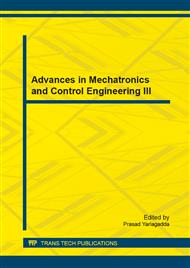p.98
p.103
p.107
p.112
p.116
p.120
p.126
p.130
p.137
Top-Down Saliency Detection via Hidden Semantic Information
Abstract:
Saliency detection has been applied in many cases. This paper proposes a 2D hidden Markov model (2D-HMM) which exploits the hidden semantic information of image to detect the salient regions. A spatial pyramid Histogram of Oriented Gradient (SP-HOG) descriptor is used to extract feature. After encoding the image by a learned dictionary, the 2D-viterbi algorithm is applied to inferring the saliency map. This model can depict the shapes of targets, and also it is robust to the targets’ change of posture and viewpoint. To validate the model with human’s visual search mechanism, eye track experiment is employed to train our model directly from the eye data. The results show that our model achieves a better performance than eye data. Moreover, it indicates that learning from eye track data to figure out their targets is possible.
Info:
Periodical:
Pages:
116-119
Citation:
Online since:
October 2014
Authors:
Keywords:
Price:
Сopyright:
© 2014 Trans Tech Publications Ltd. All Rights Reserved
Share:
Citation:


